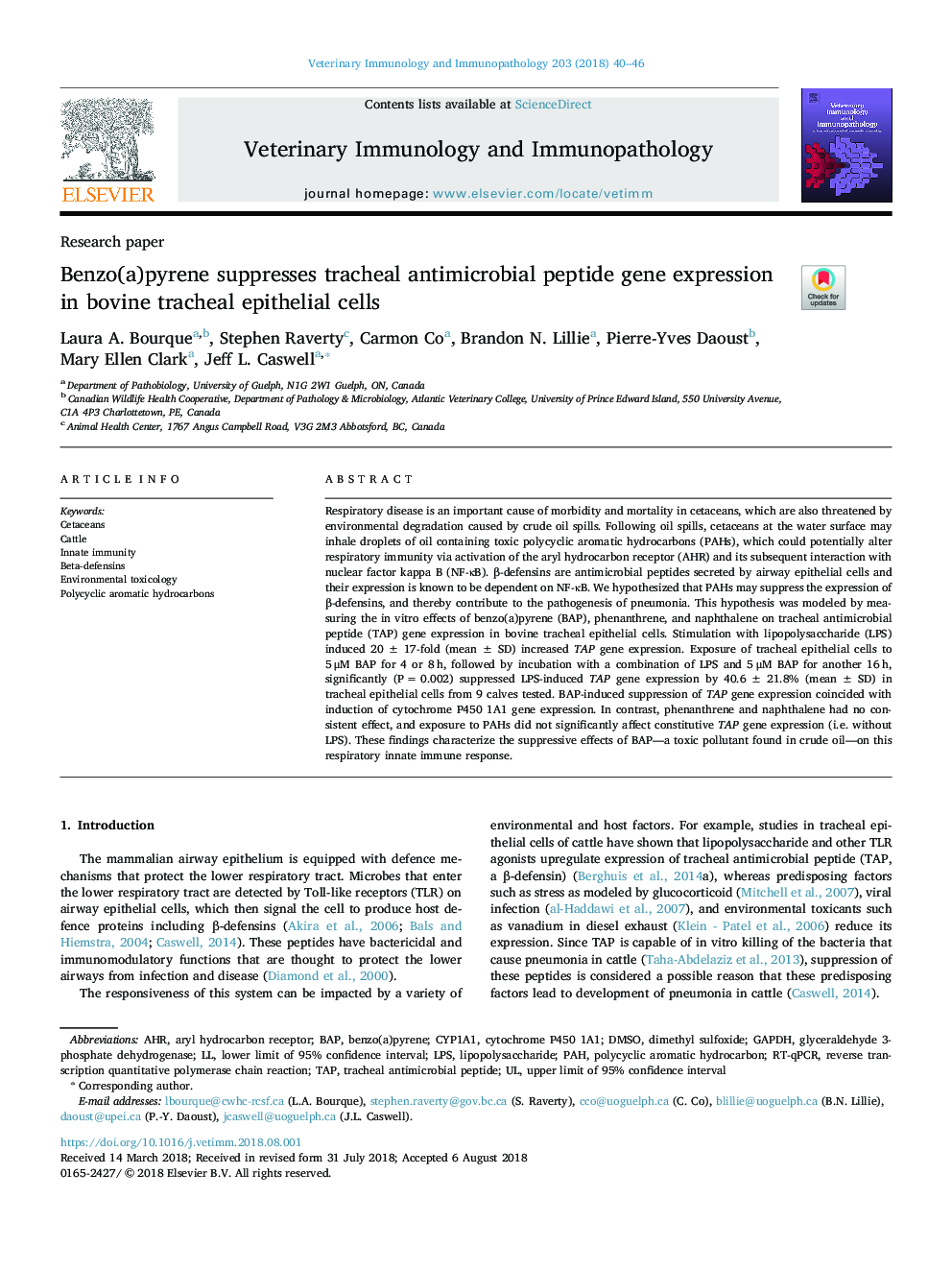| Article ID | Journal | Published Year | Pages | File Type |
|---|---|---|---|---|
| 8504649 | Veterinary Immunology and Immunopathology | 2018 | 7 Pages |
Abstract
Respiratory disease is an important cause of morbidity and mortality in cetaceans, which are also threatened by environmental degradation caused by crude oil spills. Following oil spills, cetaceans at the water surface may inhale droplets of oil containing toxic polycyclic aromatic hydrocarbons (PAHs), which could potentially alter respiratory immunity via activation of the aryl hydrocarbon receptor (AHR) and its subsequent interaction with nuclear factor kappa B (NF-κB). β-defensins are antimicrobial peptides secreted by airway epithelial cells and their expression is known to be dependent on NF-κB. We hypothesized that PAHs may suppress the expression of β-defensins, and thereby contribute to the pathogenesis of pneumonia. This hypothesis was modeled by measuring the in vitro effects of benzo(a)pyrene (BAP), phenanthrene, and naphthalene on tracheal antimicrobial peptide (TAP) gene expression in bovine tracheal epithelial cells. Stimulation with lipopolysaccharide (LPS) induced 20â±â17-fold (meanâ±âSD) increased TAP gene expression. Exposure of tracheal epithelial cells to 5âμM BAP for 4 or 8âh, followed by incubation with a combination of LPS and 5âμM BAP for another 16âh, significantly (Pâ=â0.002) suppressed LPS-induced TAP gene expression by 40.6â±â21.8% (meanâ±âSD) in tracheal epithelial cells from 9 calves tested. BAP-induced suppression of TAP gene expression coincided with induction of cytochrome P450 1A1 gene expression. In contrast, phenanthrene and naphthalene had no consistent effect, and exposure to PAHs did not significantly affect constitutive TAP gene expression (i.e. without LPS). These findings characterize the suppressive effects of BAP-a toxic pollutant found in crude oil-on this respiratory innate immune response.
Keywords
AHRLPSBeta-defensinsPAHGAPDHCYP1A1RT-qPCRBAPDMSOInnate immunityBenzo(a)pyreneDimethyl sulfoxidereverse transcription quantitative polymerase chain reactionEnvironmental toxicologycytochrome P450 1A1TAPCetaceanslipopolysaccharidePolycyclic aromatic hydrocarbonPolycyclic aromatic hydrocarbonsCattleglyceraldehyde 3-phosphate dehydrogenasearyl hydrocarbon receptor
Related Topics
Life Sciences
Agricultural and Biological Sciences
Animal Science and Zoology
Authors
Laura A. Bourque, Stephen Raverty, Carmon Co, Brandon N. Lillie, Pierre-Yves Daoust, Mary Ellen Clark, Jeff L. Caswell,
